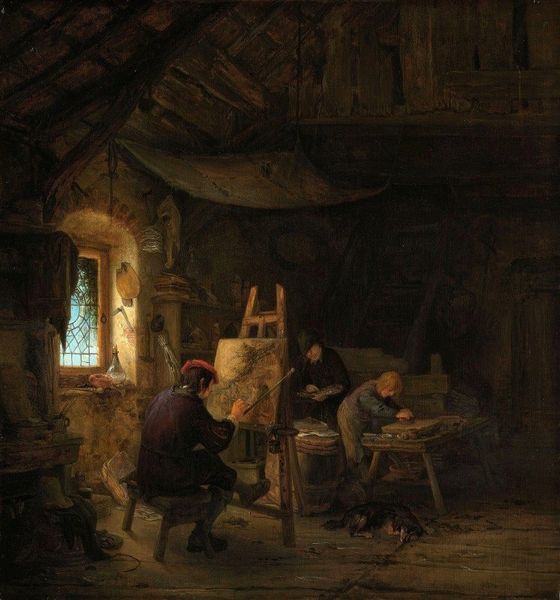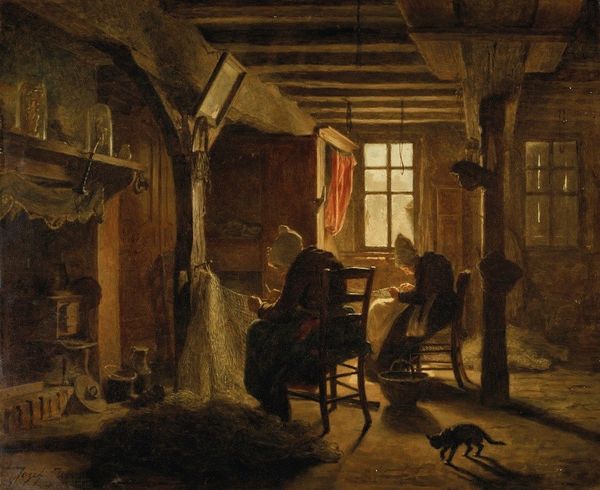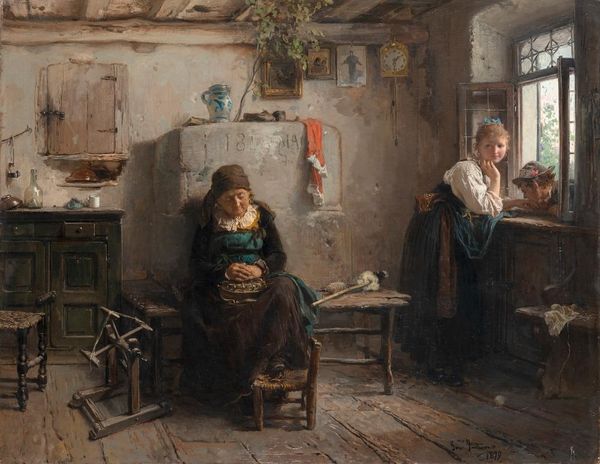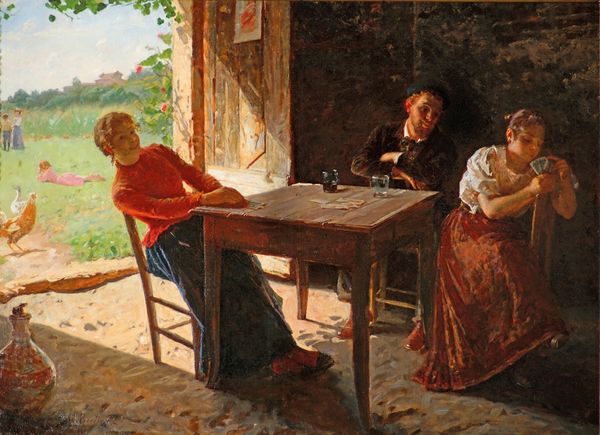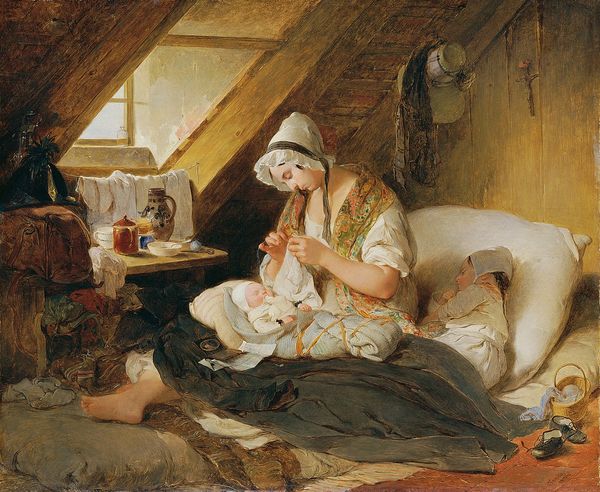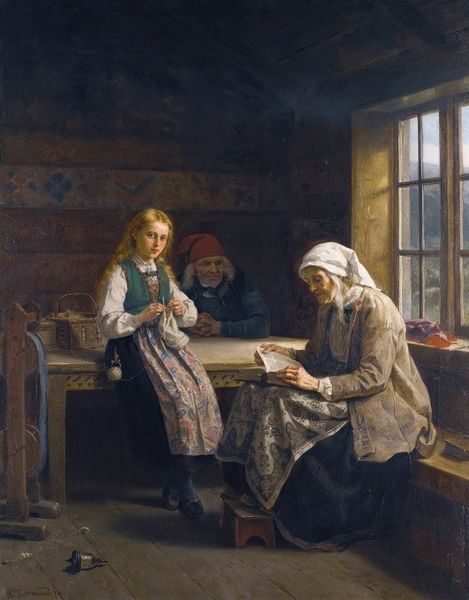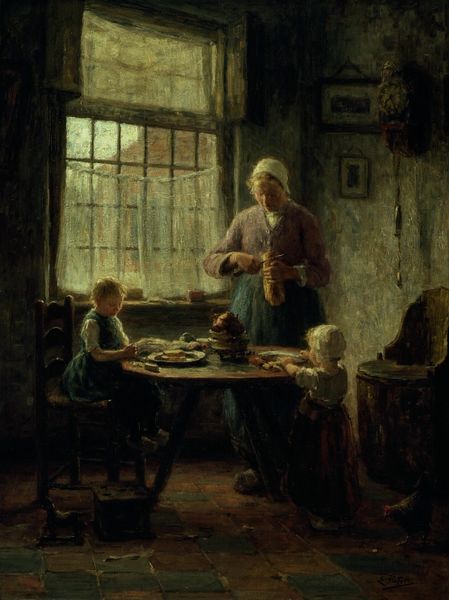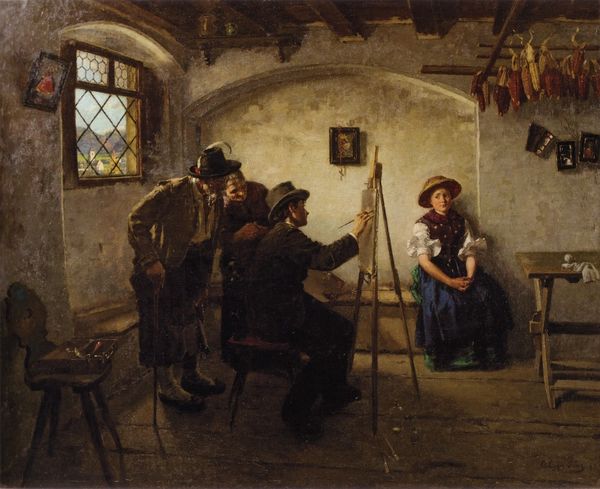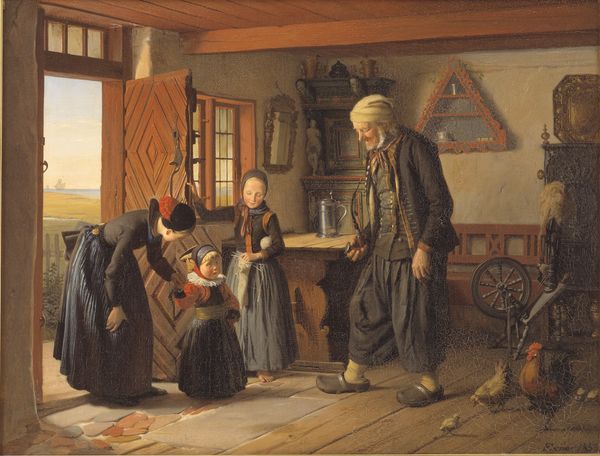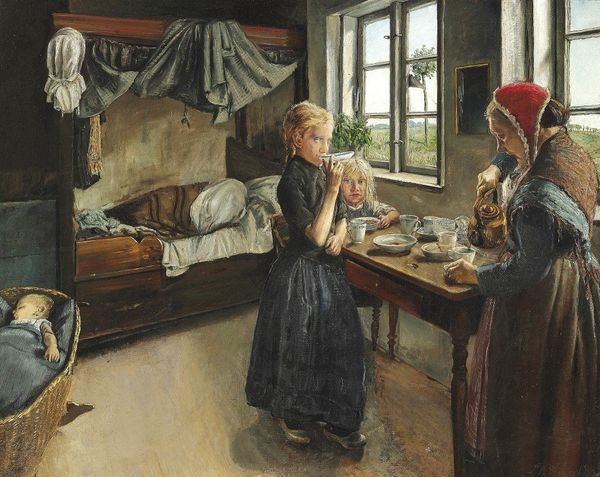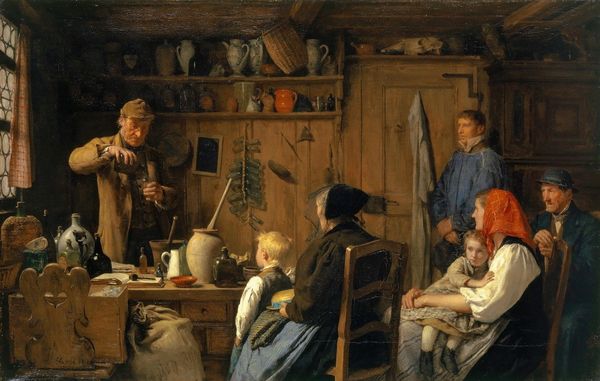
Copyright: Public Domain: Artvee
Editor: So, this is Ferdinand Georg Waldmüller’s "Der alte Kasten," from 1860. It’s a genre painting, oil on canvas, and it feels so intimate, like stepping into someone's home. What catches my eye is how meticulously the wooden textures of the wardrobe are painted. What's your interpretation of this piece? Curator: I’m immediately drawn to the materiality of this work. Waldmüller seems fascinated with the object, the ‘old chest,’ and what it signifies in terms of production, consumption, and social standing. Think about the time; 1860. How would the creation and ownership of such a large, ornate piece of furniture impact this family, economically and socially? Editor: That’s interesting. So, you're focusing on the wardrobe as more than just an object? Curator: Precisely. Look at the craftsmanship. This isn't just a functional item, it is labor manifest. Waldmüller painstakingly recreates the grain, the joinery, and even the wear and tear. The choice to portray this everyday scene with such focus on this elaborate wardrobe forces us to confront issues of class and value. Editor: The impasto technique he uses definitely emphasizes the textures. The wardrobe almost feels like it's emerging from the canvas. It stands out as being such high quality compared to other surfaces represented, like the plastered wall and the basic clothing items.. Curator: Exactly! The painting emphasizes not only artistic labor but the various types of labour evident within the scene itself. How would the creation and accumulation of possessions like the chest have shaped daily life? Where does labor end and life begin for those pictured? These objects narrate histories of production and possession far exceeding surface beauty, do you agree? Editor: I never considered it from that perspective. Thank you! Curator: It shows how the artist engaged in that era's discourse. It has been a pleasure to consider its complexities together.
Comments
No comments
Be the first to comment and join the conversation on the ultimate creative platform.
